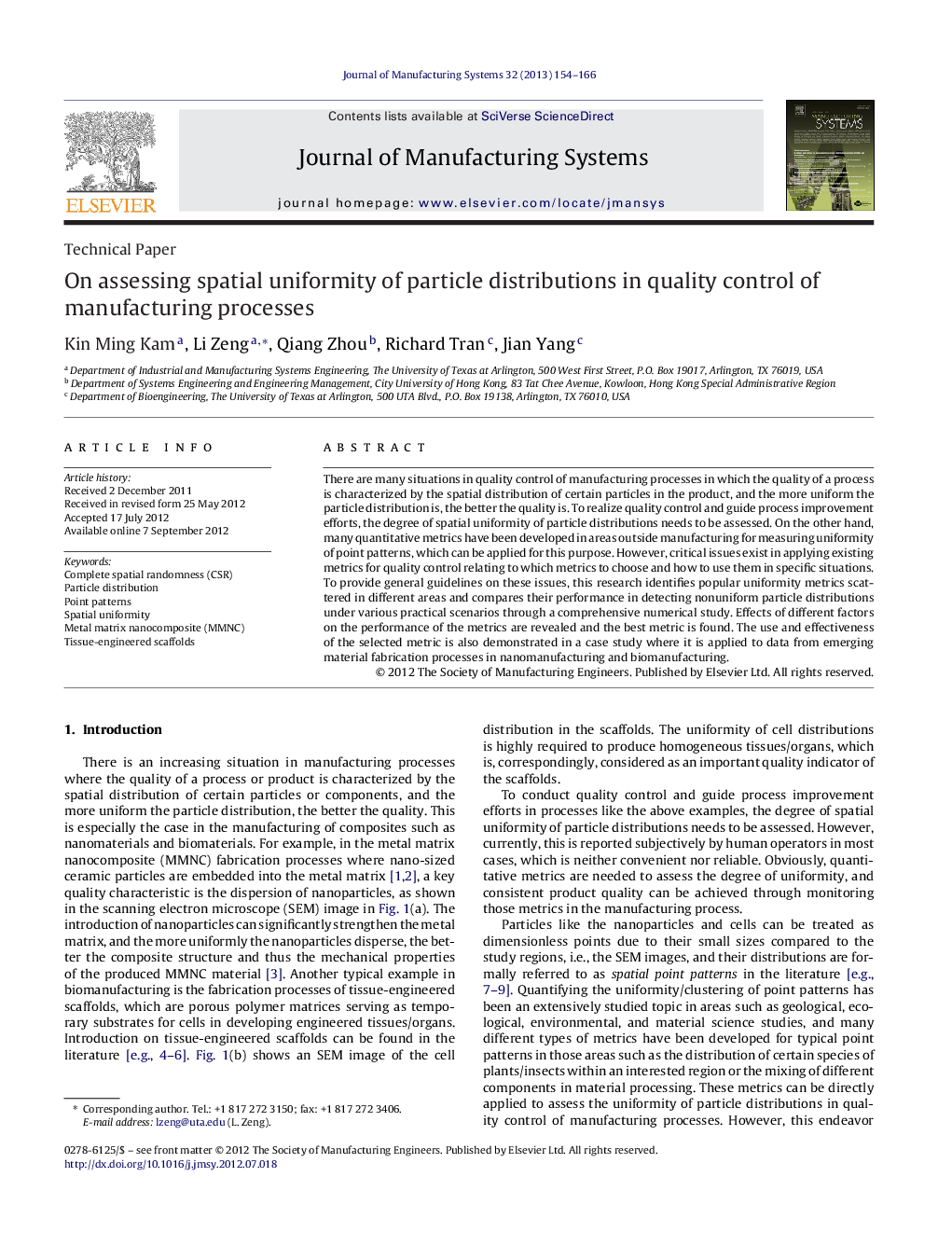| Article ID | Journal | Published Year | Pages | File Type |
|---|---|---|---|---|
| 1697660 | Journal of Manufacturing Systems | 2013 | 13 Pages |
There are many situations in quality control of manufacturing processes in which the quality of a process is characterized by the spatial distribution of certain particles in the product, and the more uniform the particle distribution is, the better the quality is. To realize quality control and guide process improvement efforts, the degree of spatial uniformity of particle distributions needs to be assessed. On the other hand, many quantitative metrics have been developed in areas outside manufacturing for measuring uniformity of point patterns, which can be applied for this purpose. However, critical issues exist in applying existing metrics for quality control relating to which metrics to choose and how to use them in specific situations. To provide general guidelines on these issues, this research identifies popular uniformity metrics scattered in different areas and compares their performance in detecting nonuniform particle distributions under various practical scenarios through a comprehensive numerical study. Effects of different factors on the performance of the metrics are revealed and the best metric is found. The use and effectiveness of the selected metric is also demonstrated in a case study where it is applied to data from emerging material fabrication processes in nanomanufacturing and biomanufacturing.
► We compare existing metrics of particle uniformity in manufacturing processes. ► Their performance is significantly affected by the observed particle distributions. ► Their performance is also affected by the specification of parameters. ► Global Shannon entropy measure has the highest detection power and robustness.
